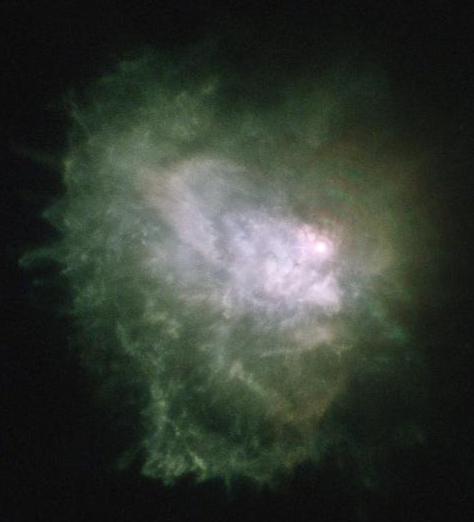What are Giant Stars?
 Michael Anissimov
Michael Anissimov
Giant stars are huge stars with a much larger radius and luminosity of a main sequence star with a similar surface temperature. Main sequence stars have a mixed core, composed of hydrogen and helium. Giant stars have a core made of helium or even heavier elements such as carbon. This is because giant stars have begun to exhaust substantial portions of their hydrogen fuel.
The giant phase is inevitable for any star with greater than 0.4 solar masses. Stars with between 0.4 and 0.5 solar masses accumulate helium in their core as they age, and eventually a pure helium core builds up, but they lack the pressure and temperature to fuse helium. The hydrogen on the periphery of the core forms a shell of rapid fusion activity, because the massive gravity of the core is compressing hydrogen onto it. The star's size expands and it becomes much more diffuse. When the Sun becomes a red giant in five billion years, its surface will reach to where Earth's orbit is today.

Stars with greater than 0.5 solar masses can fuse helium nuclei into oxygen and carbon through the triple alpha process. Although the core must reach a temperature of 108 K prior to ignition, when it does happen, it produces a glut of energy, which increases the size of the core, decreasing the pressure in the hydrogen-building shell. This slows down the fusion reactions and counterintuitively decreases the size and temperature of the star. So, a more massive star ends up less luminous than a less massive one. Such stars are part of the so-called Horizontal branch, because on a graph of luminosity against spectral type they make up a horizontal line.

If less than 8 solar masses, but greater than 0.5, the star will build up carbon in its core and begin fusing helium on a shell outside the core. It becomes an "asymptotic giant branch" or AGB star as the helium fusion accelerates and balloons its host star. These can create supergiant and hypergiant stars.
For stars greater than 8 solar masses, nuclei fuse all the way up to iron. When such a star builds up a core of iron larger than 1.44 solar masses, core collapse begins. The mutually repulsive electron shells around the iron nuclei fail to repel each other under the great pressure and temperature, and begin to fuse into another state of matter called neutronium, made up of neutrons jammed closely together in a gigantic atomic nucleus the size of a city.
As the fusion reactions in the core cease, the star fails to produce sufficient energy to counteract its own gravity, and it collapses. As the light elements fall inwards, they bounce off the nearly-incompressible neutronium core. The bounceback is sufficient to send the star's mantle exploding outwards into space at thousands of kilometers per hour. This event is called a supernova, and it is how elements heavier than iron are created.
The remainder is what is called a star remnant, or a neutron star. A teaspoon of its matter weighs two million tons.
AS FEATURED ON:
AS FEATURED ON:












Discuss this Article
Post your comments